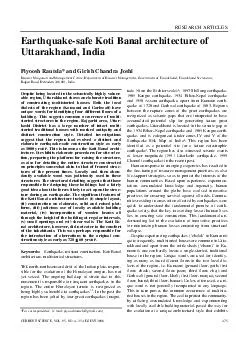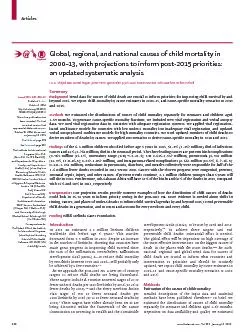PDF-RESEARCH ARTICLES CURRENT SCIENCE VOL
Author : liane-varnes | Published Date : 2015-02-21
95 NO 4 25 AUGUST 2008 475 For correspondence email piyooshrautelagmailcom Earthquakesafe Koti Banal architecture of Uttarakhand India Piyoosh Rautela and Gi rish
Presentation Embed Code
Download Presentation
Download Presentation The PPT/PDF document "RESEARCH ARTICLES CURRENT SCIENCE VOL" is the property of its rightful owner. Permission is granted to download and print the materials on this website for personal, non-commercial use only, and to display it on your personal computer provided you do not modify the materials and that you retain all copyright notices contained in the materials. By downloading content from our website, you accept the terms of this agreement.
RESEARCH ARTICLES CURRENT SCIENCE VOL: Transcript
Download Rules Of Document
"RESEARCH ARTICLES CURRENT SCIENCE VOL"The content belongs to its owner. You may download and print it for personal use, without modification, and keep all copyright notices. By downloading, you agree to these terms.
Related Documents














